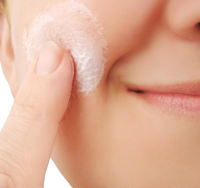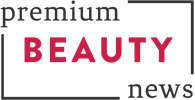
Safety of parabens confirmed
Parabens, a family of preservatives, have been the subject of several controversies regarding their safety in cosmetic products. A consequence on the market has been the mushrooming of paraben-free personal care products. But parabens used in cosmetics are safe, according to a recent draft opinion of the Scientific Committee on Consumer Safety (SCCS), an experts panel that provides the European Commission with opinions on health and safety risks of non-food consumer products. [1]
Opinion on methyl and ethyl parabens unchanged
The draft opinion re-iterates a June 2008 opinion confirming the safety of two parabens, methyl and ethyl parabens, at current maximum authorized concentrations (0.4%).
However, when this earlier opinion was adopted, the scientific committee required further data before a final opinion on other parabens would be considered. The industry therefore generated and submitted additional data on butylparaben and propylparaben, the other categories (isopropyl, isobutyl, phenyl, benzyl and pentyl parabens) being considered of no commercial importance.
Use of butyl and propyl parabens restricted
After having reviewed all the available information, including the possible relationship between the use of parabens and the development of breast cancer, the estrogenic and androgenic properties of parabens, and their dermal absorption, the SCCS said, in its new opinion, that butylparaben and propylparaben can be used safely in cosmetics, “as long as the sum of their individual concentrations does not exceed 0.19%”.
The 0.19% threshold is to put in relation with the current legal limitations, which are significantly higher. Indeed, European cosmetics regulations permit the use of parabens in cosmetic products at a maximum concentration of 0.4% (and 0.8% for a mixture). [2] However, according to the Cosmetics Toiletry and Perfumery Association (CTPA), the voice of British cosmetics makers, limits proposed by the SCCS are “in line with industry practice”. In practice, the maximum concentrations proposed by the SCCS are rarely exceeded in cosmetics, and industry experts say that very few products on the market fall outside of this range.
The SCCS added it was not able to assess the safety of other parabens (isopropyl, isobutyl, phenyl, benzyl and pentyl parabens) for which limited to no information was submitted.
Hair dye HC Red No 16 poses health risks
In addition to parabens, the SCCS also published draft opinions on two hair dyes, HC Yellow n° 13 with the chemical name 4-(2’-Hydroxyethyl)-amino-3- nitrotrifluormethylbenzene, and HC Red n° 16 with the chemical name N-(2-nitro-4-aminophenyl)- allylamine (B114).
HC Yellow n° 13 is considered as safe at a maximum on-head concentration of 2.5% in oxidative and non-oxidative hair dye formulations, despite the fact that a sensitising potential cannot be excluded.
On the contrary, the SCCS says that the use of HC Red n° 16 as a hair dye ingredient within current admissible on-head concentrations (0.75% under oxidative and 1.5% under non-oxidative conditions) poses a risk to the health of the consumer, due a low margin of safety.
These opinions, including the one on parabens, are open for comments until January 28, 2011.




























